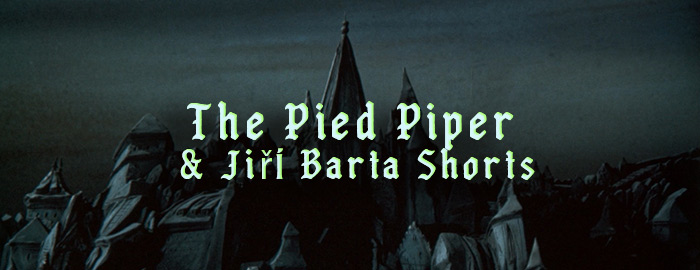
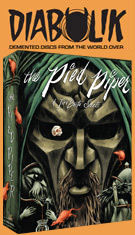

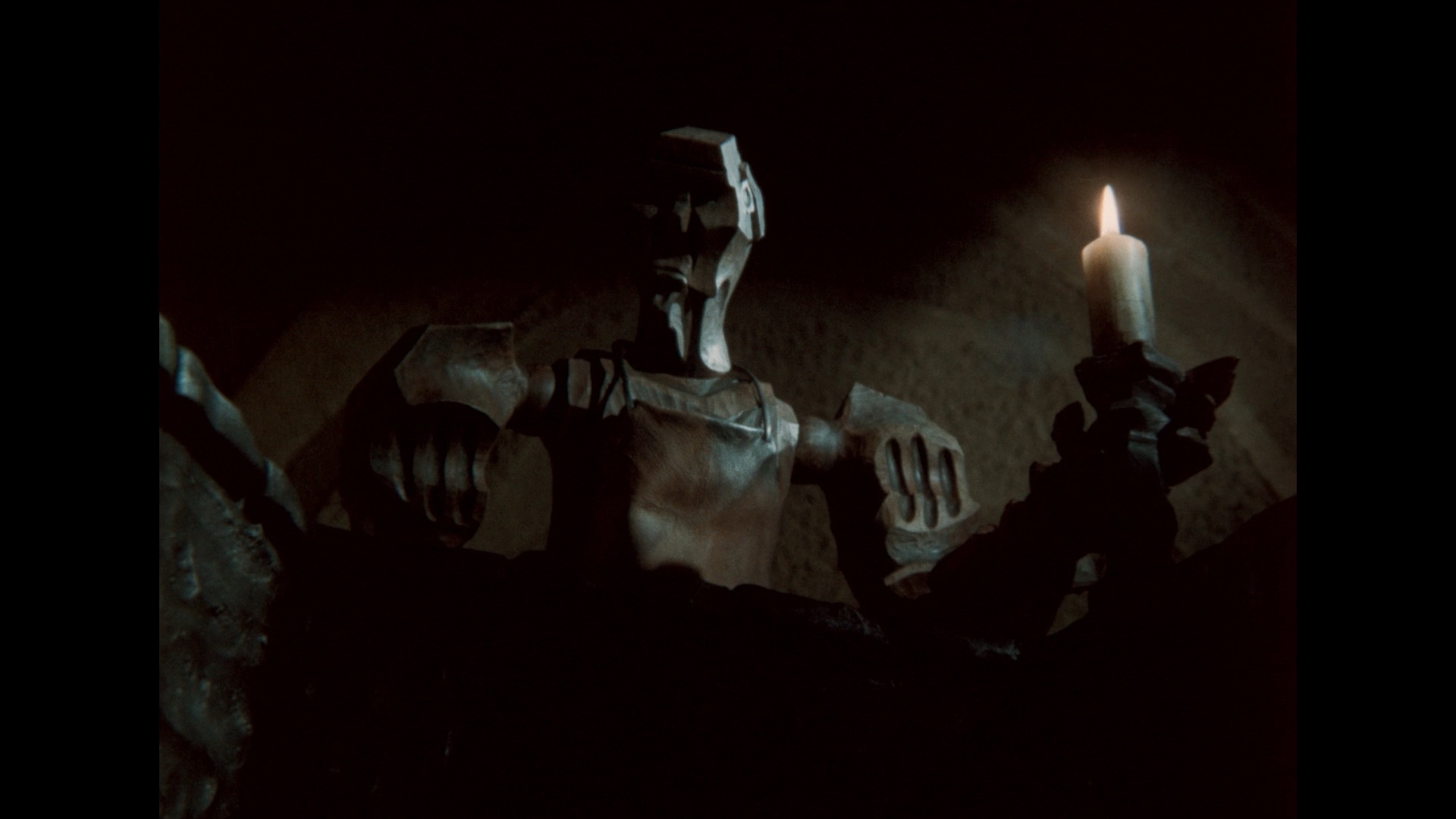 reputation on the international animation scene since the late '70s, Czech filmmaker Jiří Bárta made his biggest splash
reputation on the international animation scene since the late '70s, Czech filmmaker Jiří Bárta made his biggest splash 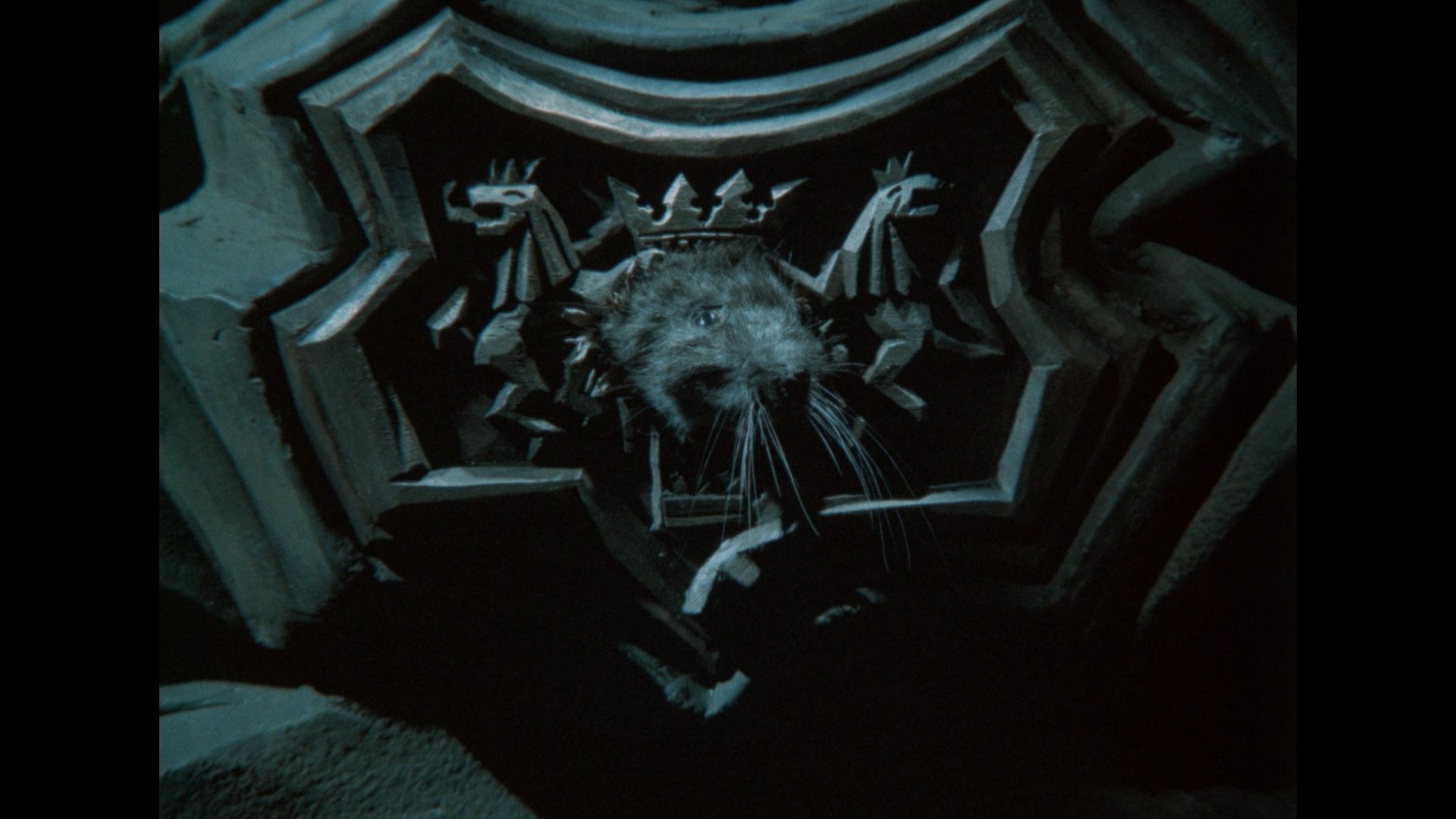 in 1986 with his striking, German Expressionist-inspired rendition of the macabre fairy tale The Pied Piper. Often compared to fellow countryman Jan Švankmajer due to its focus on mechanical processes and rampaging rodents, the film draws on elements from various versions of the familiar story but goes in an even darker direction than the '70s Jacques Demy film, dispensing with the entire idea of the town children being lured away in favor of something more in the vein of E.C. Comics.
in 1986 with his striking, German Expressionist-inspired rendition of the macabre fairy tale The Pied Piper. Often compared to fellow countryman Jan Švankmajer due to its focus on mechanical processes and rampaging rodents, the film draws on elements from various versions of the familiar story but goes in an even darker direction than the '70s Jacques Demy film, dispensing with the entire idea of the town children being lured away in favor of something more in the vein of E.C. Comics.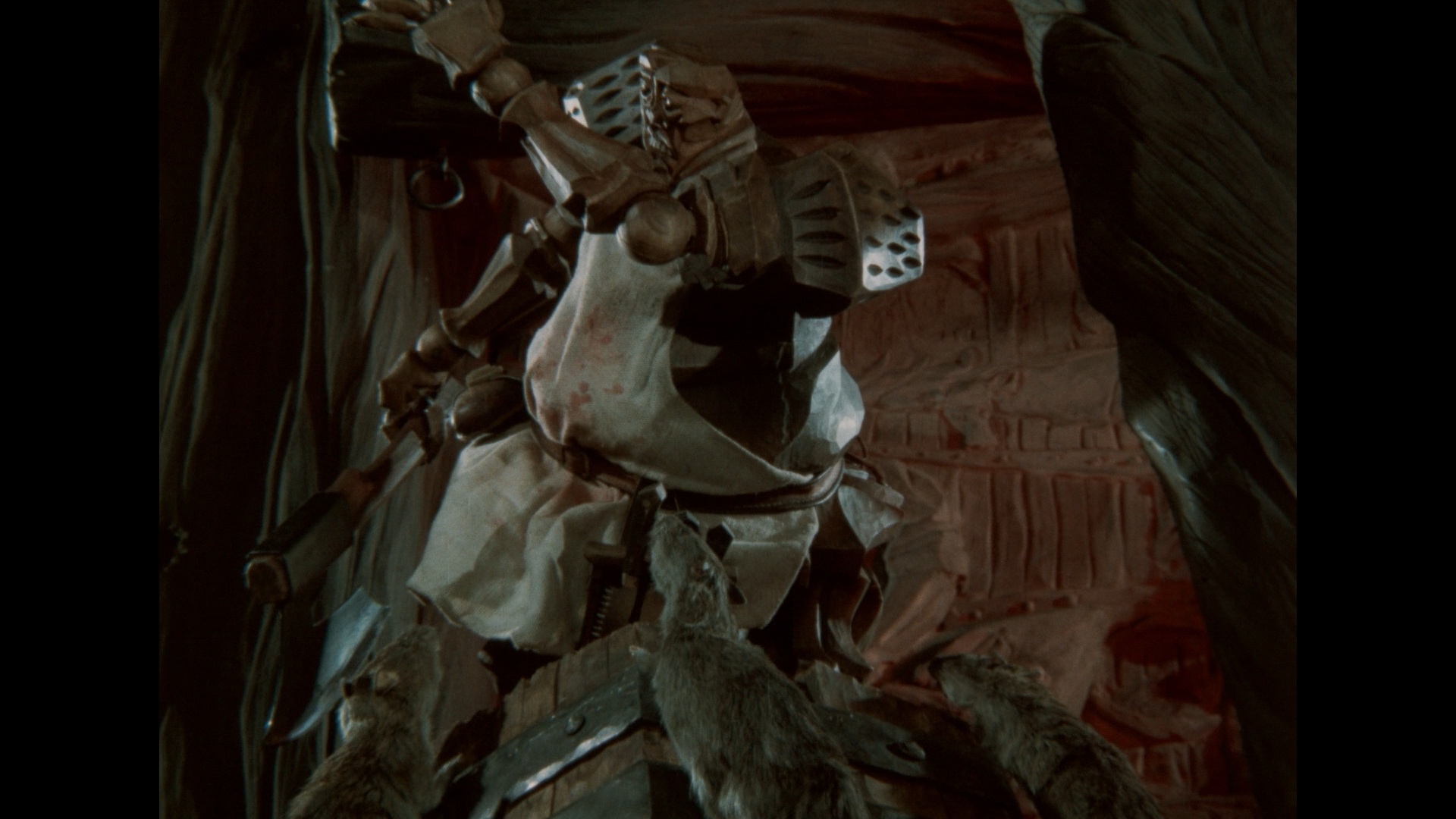 the piper's attention. Then things get grisly.
the piper's attention. Then things get grisly.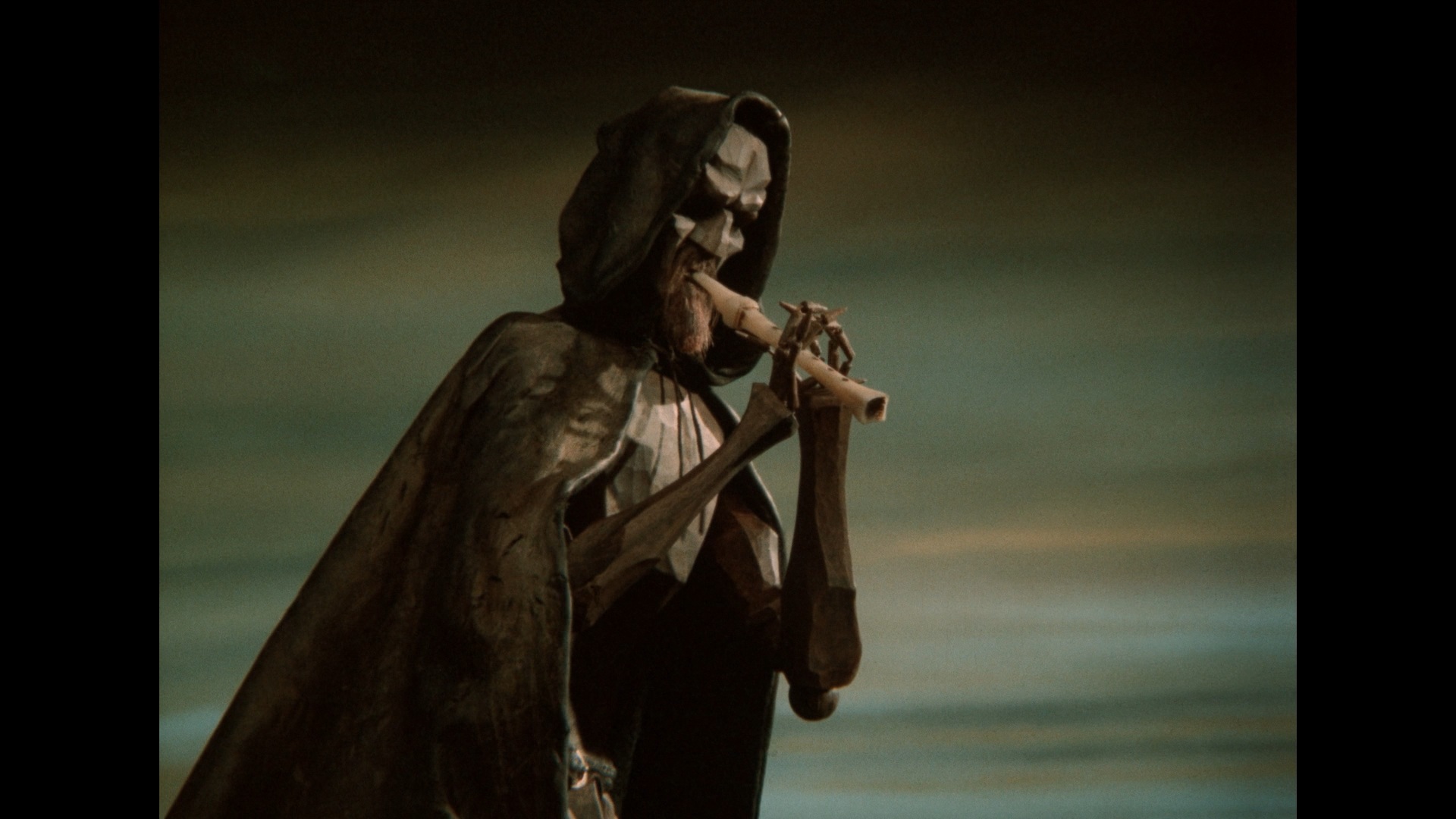 for young kids but will entrance animation fans of just about any other age. From the outset what really impresses here is the sense of scale with the angular characters often dwarfed by what seem to be massive, stylized sets, an illusion Barta and his fellow craftsmen went to great pains to achieve. Apart from film festival play, this film and much of Barta's other work was very difficult to see for the average viewer until a 2006 DVD release from Kino Lorber as part of its relationship at the time with Kimstim, Jiří Barta: Labyrinth of Darkness, which featured this film and eight additional shorts in okay standard def presentations.
for young kids but will entrance animation fans of just about any other age. From the outset what really impresses here is the sense of scale with the angular characters often dwarfed by what seem to be massive, stylized sets, an illusion Barta and his fellow craftsmen went to great pains to achieve. Apart from film festival play, this film and much of Barta's other work was very difficult to see for the average viewer until a 2006 DVD release from Kino Lorber as part of its relationship at the time with Kimstim, Jiří Barta: Labyrinth of Darkness, which featured this film and eight additional shorts in okay standard def presentations. 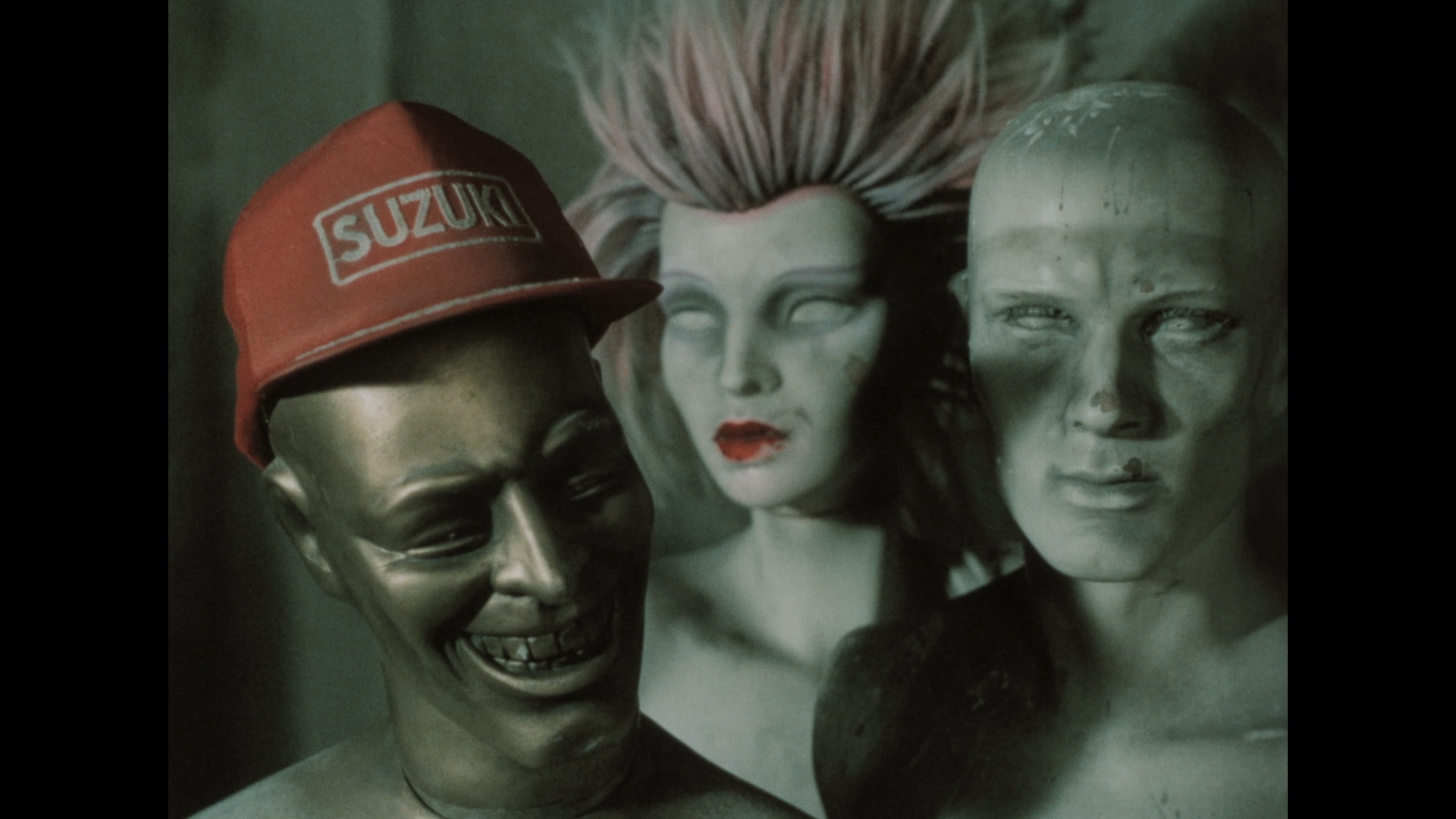 Crocodile's Dennis Bartok (with Kovarova translating) about the development of the film including the initial conceptual challenges he had to surmount, the
Crocodile's Dennis Bartok (with Kovarova translating) about the development of the film including the initial conceptual challenges he had to surmount, the 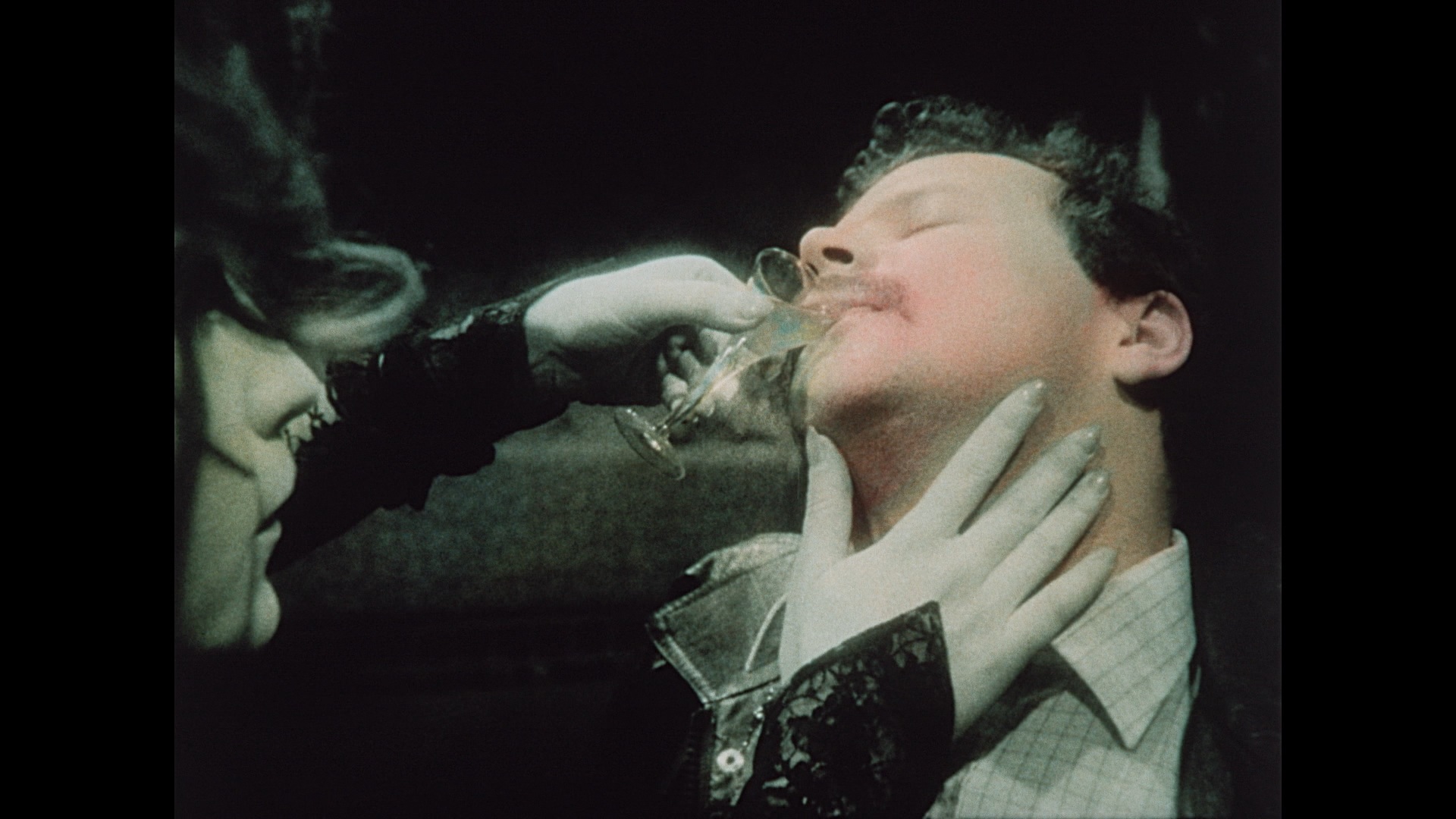 local talent recruited for it, the mammoth nature of the production for the time, and its place in his overall body of work. The 1985 making-of "Chronicle of the Pied Piper (13m13s) features tons of great behind-the-scenes footage of the artists at work on the film, giving you an impressive sense of the extent of the model work, lighting, and backgrounds here as well as the extensive handwork required for the figures. Finally you the 1982 Barta short The Vanished World of Gloves (17m27s), a whimsical and wildly inventive leap through the 20th century using the evolution of film and a pair of stop-motion gloves traversing world history. It's also fully restored here and in much better quality than the earlier DVD.
local talent recruited for it, the mammoth nature of the production for the time, and its place in his overall body of work. The 1985 making-of "Chronicle of the Pied Piper (13m13s) features tons of great behind-the-scenes footage of the artists at work on the film, giving you an impressive sense of the extent of the model work, lighting, and backgrounds here as well as the extensive handwork required for the figures. Finally you the 1982 Barta short The Vanished World of Gloves (17m27s), a whimsical and wildly inventive leap through the 20th century using the evolution of film and a pair of stop-motion gloves traversing world history. It's also fully restored here and in much better quality than the earlier DVD.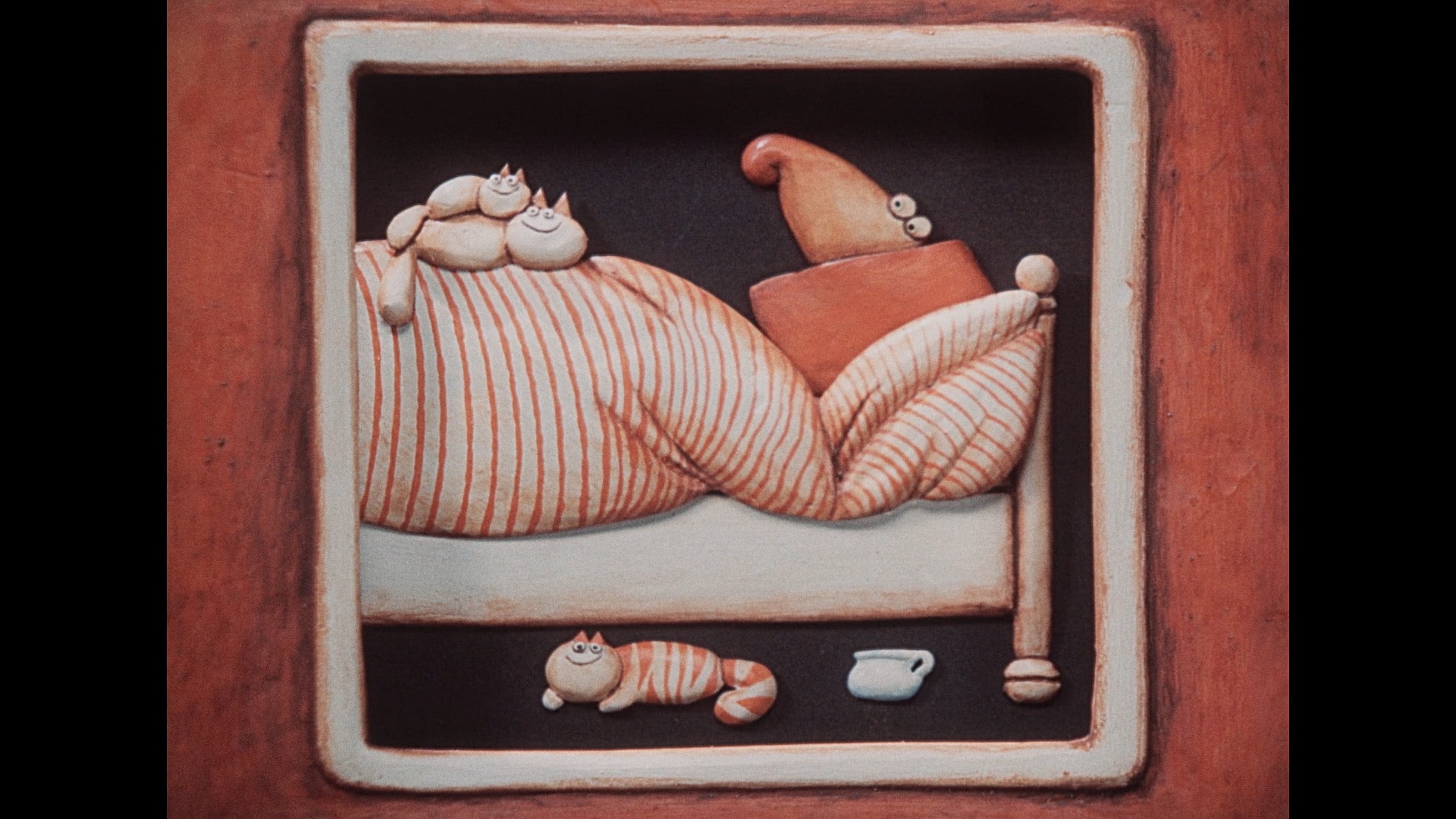 Design (6m1s) takes place on a drafting table where a sprawling
Design (6m1s) takes place on a drafting table where a sprawling 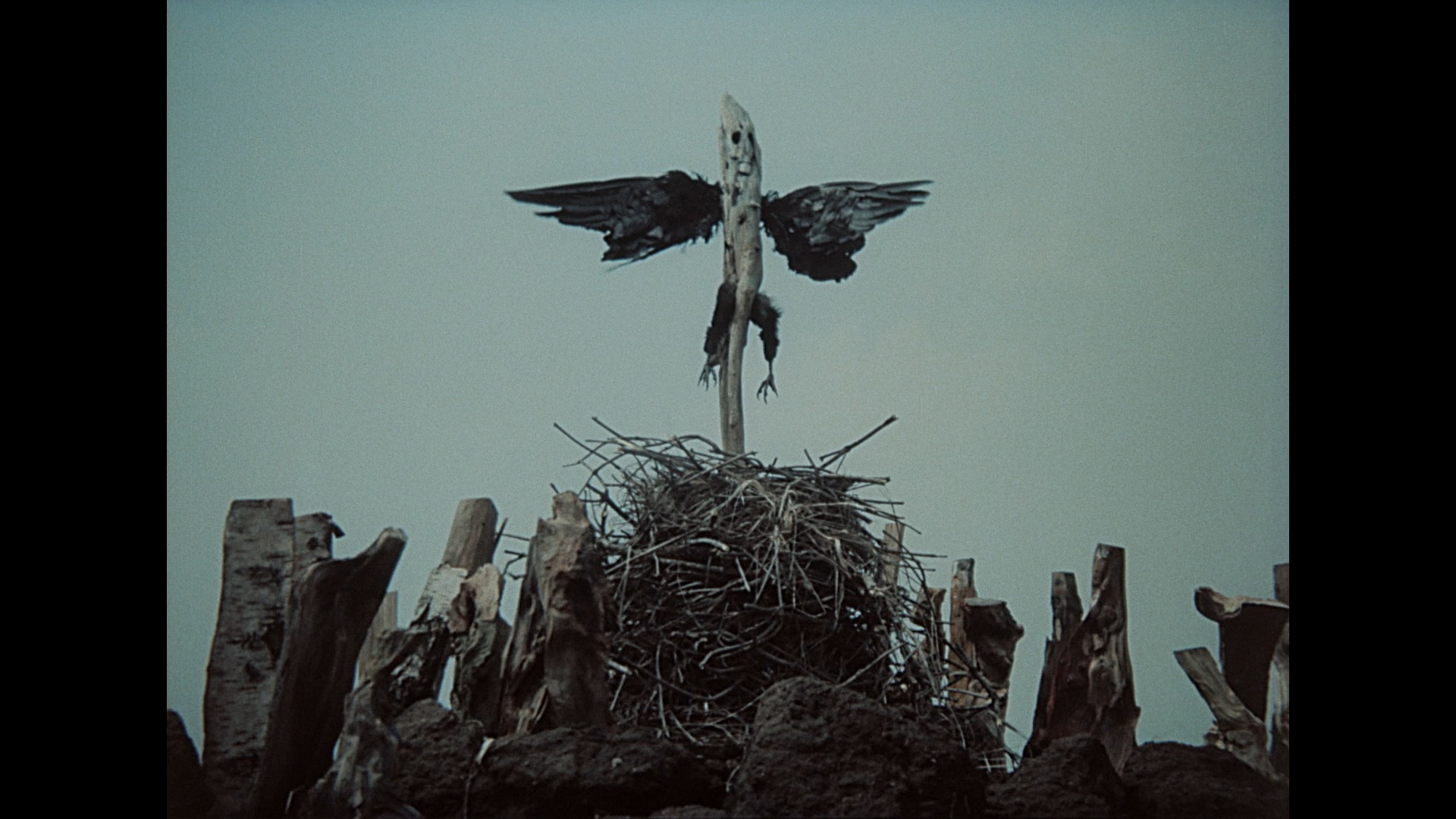 apartment design takes shape before your eyes. Fans of folk horror will definitely get a kick out of 1983's A Ballad About Green Wood (10m39s), an ode to nature with animated firewood logs spending the seasons summoning and unleashing a creature with feathered wings before the cycle begins again. The real standout here for horror fans though is 1987's The Last Theft (20m58s), which uses a wild bleached-color technique for a spooky vignette in which a thief breaks into an apartment only to find himself at the mercy of a collection of supernatural adversaries. Finally in 1989's The Club of the Laid Off (25m14s), a collection of seemingly abandoned mannequins in various states of pop culture adornment come to life in a creepy imitation of daily human routines. The Vanished World of Gloves is carried over here as well to make marathon viewing easier, and you also get two substantial new video extras starting with a new Barta interview with Bartok and Kovarova (76m12s) speaking at length about his short film work including his first break into working as a director, the venues for his shorts, the various innovations he came up with along the way, and the ideas about society he wove into them including some obvious thoughts on state-sponsored living conditions. You also get a new visual essay, "Pushed to the Margins" (29m40s), a conversation by Kovarova and Hames edited by Ryan Verrill with a thorough tour through the short films using clips to show how the filmmaker's style changed over the years using the camera to push his cinematic language in new directions with each effort. As usual, the release is available as a standard edition or a limited 2,000 unit one featuring an exclusive slipcase and a lovely 60-page book featuring essays by Jonathan Owen, Walter Chaw, and Kovarova about the historical period covered by these films, their commentary on human behavior and social structures, and the tactile nature of the animation that gives them a fascination and charm that will never fade.
apartment design takes shape before your eyes. Fans of folk horror will definitely get a kick out of 1983's A Ballad About Green Wood (10m39s), an ode to nature with animated firewood logs spending the seasons summoning and unleashing a creature with feathered wings before the cycle begins again. The real standout here for horror fans though is 1987's The Last Theft (20m58s), which uses a wild bleached-color technique for a spooky vignette in which a thief breaks into an apartment only to find himself at the mercy of a collection of supernatural adversaries. Finally in 1989's The Club of the Laid Off (25m14s), a collection of seemingly abandoned mannequins in various states of pop culture adornment come to life in a creepy imitation of daily human routines. The Vanished World of Gloves is carried over here as well to make marathon viewing easier, and you also get two substantial new video extras starting with a new Barta interview with Bartok and Kovarova (76m12s) speaking at length about his short film work including his first break into working as a director, the venues for his shorts, the various innovations he came up with along the way, and the ideas about society he wove into them including some obvious thoughts on state-sponsored living conditions. You also get a new visual essay, "Pushed to the Margins" (29m40s), a conversation by Kovarova and Hames edited by Ryan Verrill with a thorough tour through the short films using clips to show how the filmmaker's style changed over the years using the camera to push his cinematic language in new directions with each effort. As usual, the release is available as a standard edition or a limited 2,000 unit one featuring an exclusive slipcase and a lovely 60-page book featuring essays by Jonathan Owen, Walter Chaw, and Kovarova about the historical period covered by these films, their commentary on human behavior and social structures, and the tactile nature of the animation that gives them a fascination and charm that will never fade.![]()